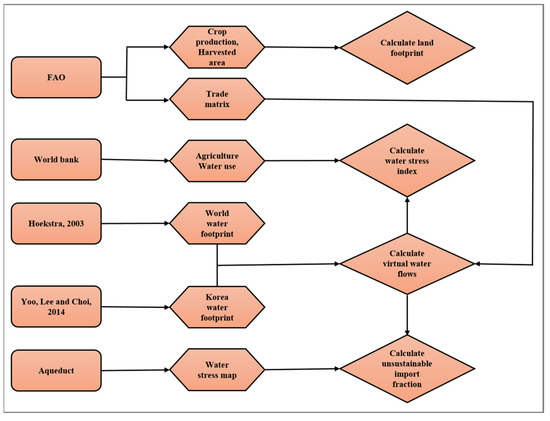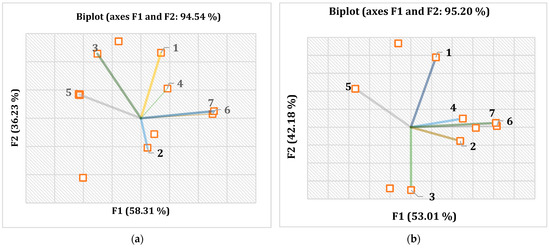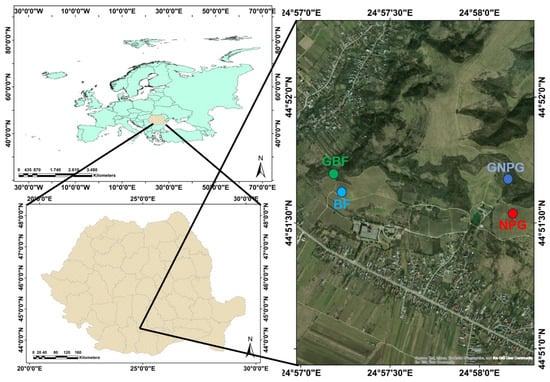Landscape Approaches in Era of Post-2020 Global Biodiversity Framework: Sustainable Forestry and Agriculture, Close-to-Nature Forestry, and Conservations in OECMs
Share This Topical Collection
Editors
 Prof. Dr. Ryo Kohsaka
Prof. Dr. Ryo Kohsaka
 Prof. Dr. Ryo Kohsaka
Prof. Dr. Ryo Kohsaka
E-Mail
Website
Guest Editor
Department of Social and Human Environment, Graduate School of Environmental Studies, Nagoya University, Furo-cho, Chikusa-ku, D2-1, Aichi 464-8601, Japan
Interests: ecosystem service; NTFPs; geographical Indications
Special Issues, Collections and Topics in MDPI journals
 Dr. Chika Takatori
Dr. Chika Takatori
 Dr. Chika Takatori
Dr. Chika Takatori
E-Mail
Website
Guest Editor
Graduate School of Design, Kyushu University, 4-9-1 Shiobaru, Minamiku, Fukuoka 815-8540, Japan
Interests: urban planning; land use planning; landscape management
 Dr. Satomi Kohyama
Dr. Satomi Kohyama
 Dr. Satomi Kohyama
Dr. Satomi Kohyama
E-Mail
Website
Guest Editor
Faculty of Social Sciences, Academic Assembly, Graduate School of Sustainability Studies, University of Toyama, 3190 Gofuku, Toyama City, Toyama 930-8555, Japan
Interests: environmental law; administrative law; intellectual property law
Topical Collection Information
Dear Colleagues,
It is our pleasure to invite researchers in the fields of forestry and agricultural sciences, environmental economics, urban forestry and agricultural planning, and ecology, who have a multidisciplinary approach, to submit papers to this Special Issue.
We welcome submissions on sustainable management and strategies regarding forest resources, including mangrove forests. In terms of sustainable management, this Special Issue will focus on local perceptions considering Sustainable Development Goals (SDGs) and the post-2020 global biodiversity framework of the Convention on Biological Diversity (CBD), which are expected to be agreed upon in May 2022. Other international-level conservation schemes of forests will also be highlighted, such as the Other effective area-based conservation measures (OECMs) and the Landscape approach. There are regional efforts in the EU on forest management, for instance, the close-to-nature forest certification and the New EU Forest Strategy for 2030. Climate-change-related measures both in agriculture and forestry were introduced in Japan this year as a strategy for sustainable food systems, for example MeaDRI. Case studies and/or theoretical topics under this Special Issue can include perceptive studies of local communities, the economic valuation of local ecosystem services, forest transition, values for communities, and participatory approaches of forest management, monitoring, and policymaking.
Furthermore, the scope of this issue includes: policy analyses at local, national, and international levels, considering the recently updated forest strategies in EU and Asian countries; and benefit sharing both from global and local perspectives, including producers, consumers, and policymakers. Emerging concepts such as nature’s contribution to people (NCP) are also highlighted in this issue to explore the policy-relevant concepts for forest strategies and related policies and schemes.
We will also include international schemes such as REDD+ for regional and global strategies. There are different types of policies and actions for sustainable resource management. Sustainable forest management and related environmental management can be expanded and implemented based on the local and global collaborations of various stakeholders. Considering the transformative changes in the fields of environmental management, innovative local and international schemes for this management are highlighted in this Special Issue.
Prof. Dr. Ryo Kohsaka
Dr. Chika Takatori
Dr. Yuta Uchiyama
Dr. Satomi Kohyama
Guest Editors
Manuscript Submission Information
Manuscripts should be submitted online at www.mdpi.com by registering and logging in to this website. Once you are registered, click here to go to the submission form. Manuscripts can be submitted until the deadline. All submissions that pass pre-check are peer-reviewed. Accepted papers will be published continuously in the journal (as soon as accepted) and will be listed together on the collection website. Research articles, review articles as well as short communications are invited. For planned papers, a title and short abstract (about 100 words) can be sent to the Editorial Office for announcement on this website.
Submitted manuscripts should not have been published previously, nor be under consideration for publication elsewhere (except conference proceedings papers). All manuscripts are thoroughly refereed through a single-blind peer-review process. A guide for authors and other relevant information for submission of manuscripts is available on the Instructions for Authors page. Sustainability is an international peer-reviewed open access semimonthly journal published by MDPI.
Please visit the Instructions for Authors page before submitting a manuscript.
The Article Processing Charge (APC) for publication in this open access journal is 2400 CHF (Swiss Francs).
Submitted papers should be well formatted and use good English. Authors may use MDPI's
English editing service prior to publication or during author revisions.
Keywords
- urban forestry
- mangrove forest management
- landscape approach
- benefit sharing
- close-to-nature forestry
- community perceptionsș
Published Papers (4 papers)
Open AccessArticle
Quantifying Resource Nexus: Virtual Water Flows, Water Stress Indices, and Unsustainable Import Fraction in South Korea’s Grain Trade Landscape
by
Golden Odey, Bashir Adelodun, Qudus Adeyi, Akinsoji Adisa Hammed, Salau Rahmon Abiodun and Kyung Sook Choi
Cited by 1 | Viewed by 1163
Abstract
This study delves into the intricate dynamics of South Korea’s grain production and trade, specifically scrutinizing water resource management and sustainability trends from 1991 to 2022. The primary objective was to assess the temporal evolution of South Korea’s agricultural virtual water trade in
[...] Read more.
This study delves into the intricate dynamics of South Korea’s grain production and trade, specifically scrutinizing water resource management and sustainability trends from 1991 to 2022. The primary objective was to assess the temporal evolution of South Korea’s agricultural virtual water trade in maize, soybeans and wheat. Employing the virtual water flows assessment method, water stress index, and an unsustainable import fraction (UIF) analysis, this research aimed to uncover key patterns and dynamics within the agricultural grain trade landscape. Utilizing comprehensive datasets encompassing grain trade, as well as water and land footprint data, this study assessed the intricate interplay between agricultural production, trade, and resource utilization. Results showed a reduction in local production for soybeans and a slight increase in domestic wheat production over the study period. In addition, the study revealed an overall increase in the virtual water imports associated with grain crops, with maize exhibiting the steepest upward trend in comparison with the other grains (wheat and soybeans). Furthermore, the study demonstrated that the import of maize contributed the highest amount of water and land savings, implying that this grain crop had the most significant impact on conserving local water and land resources. Environmental impact assessments, including water stress indices and the unsustainable import fractions, contributed to a comprehensive understanding of grain trade sustainability with concrete result values and insights, highlighting the intricate interplay of international grain trade and local water resource conservation in South Korea. By scrutinizing the virtual land and water dimensions of grain trade, this research offers valuable insights for policymakers and researchers striving to navigate the nexus of agriculture, trade, and resource management. The findings hold significance in the context of ensuring food security, optimizing resource allocation, and fostering sustainable agricultural practices in a dynamically evolving global landscape.
Full article
►▼
Show Figures
Open AccessArticle
Morpho-Quantitative Traits and Interrelationships between Environmental Factors and Phytophthora infestans (Mont.) de Bary Attack in Tomato
by
Roxana Alexandra Sabo, Csaba-Pál Racz, Ioan Oroian, Petru Burduhos, Camelia Manuela Mîrza, Claudia Balint, Cristian Mălinaș and Antonia Cristina Maria Odagiu
Viewed by 885
Abstract
The growing imperative for sustainable development generates research in the field and explores innovative approaches to manage vegetable crops to reduce the usage of synthetic inputs commonly associated with conventional practices as well as to promote the undertaking of organic solutions. Tomatoes are
[...] Read more.
The growing imperative for sustainable development generates research in the field and explores innovative approaches to manage vegetable crops to reduce the usage of synthetic inputs commonly associated with conventional practices as well as to promote the undertaking of organic solutions. Tomatoes are universally recognized as a highly significant and popular fruit vegetable due to their large use palette. Trials were carried out in the Gâlgău area, Transylvania, Romania. Bifactorial experiments were organized to quantify the influence of fertilization and treatments on the morpho-productive and quantitative traits of the Ruxandra tomato cultivar and on
Phytophthora infestans levels of infection. The use of mixed fertilization resulted in the best performances of morphological traits (highest leaf area, highest number of leaves and fruits, highest chlorophyll content) and part of the productive traits (highest content of dry matter), and the lowest levels of infection in cv. Ruxandra, while the use of NPK soil fertilization led to the best performances in fruit weight and NUE, whatever the administered treatment. The treatment with herbal extracts showed a similar efficacy in increasing the averages of morpho-productive traits and diminishing the
P. infestans level of infection compared with the conventional treatment. The treatment efficacy was mainly influenced by temperature and relative air humidity, regardless of the fertilization strategies applied.
Full article
►▼
Show Figures
Open AccessEditor’s ChoiceArticle
The Influence of Groves on Aboveground Arthropod Diversity and Evolution in a Vineyard in Southern Romania
by
Diana Elena Vizitiu, Ionela-Daniela Sardarescu, Elena Cocuta Buciumeanu, Ionela-Cătălina Guta, Lucian Dincă, Flavius Bălăcenoiu, Dragoș Toma, Vlad Crișan and Alin Din
Viewed by 1272
Abstract
This paper investigates the biodiversity of adult arthropods in two grapevine plantations influenced by two adjacent groves over a three-year period (2020–2022) in the viticultural center of Stefănești Argeș, located in southern Romania. The study holds significant implications for introducing parasitoid/predatory insect species
[...] Read more.
This paper investigates the biodiversity of adult arthropods in two grapevine plantations influenced by two adjacent groves over a three-year period (2020–2022) in the viticultural center of Stefănești Argeș, located in southern Romania. The study holds significant implications for introducing parasitoid/predatory insect species into vineyards to control grapevine pests. A total of 164 arthropod species were identified, including 27 beneficial species. Additionally, two moth species,
Lobesia botrana and
Sparganothis pilleriana, were identified.
L. botrana was consistently observed throughout the study, while
S. pilleriana was only observed in 2022. The research reveals that the location with the highest number of identified species was in a grove near a black field, with 103 species. Other areas with notable species diversity included a vineyard maintained as a black field (89 species), a grove near permanent natural grassland (88 species), and a vineyard with intervals between rows of grapevines maintained as natural permanent grassland (81 species). Introducing beneficial organisms, such as the predator
Crysoperla carnea, is recommended to control grapevine moths in this ecosystem.
Full article
►▼
Show Figures
Open AccessEditor’s ChoiceArticle
Status and Trends in Forest Environment Transfer Tax and Information Interface between Prefectures and Municipalities: Multi-Level Governance of Forest Management in 47 Japanese Prefectures
by
Ryo Kohsaka and Yuta Uchiyama
Cited by 2 | Viewed by 2240
Abstract
In 2019, Japan introduced a national forest-environment-transfer tax (FETT). Prefectural and municipal governments receive tax revenue. Currently, 37 prefectures in Japan have prefectural forest taxes, and the prefectures need to demarcate how their own taxes and the national tax are being used. This
[...] Read more.
In 2019, Japan introduced a national forest-environment-transfer tax (FETT). Prefectural and municipal governments receive tax revenue. Currently, 37 prefectures in Japan have prefectural forest taxes, and the prefectures need to demarcate how their own taxes and the national tax are being used. This study analyzed the overall use trends of national tax, which is for supporting municipal forest management, and review the status of prefectural forest environmental taxes. National tax was primarily applied to organizing the information of forests and their owners. The main components of support by prefectures to municipalities were support to questionnaires for private forest owners, other technical supports, securing successors, and training successors. Regarding the prefectural taxes, forest types and policies, which were implemented by the taxes, were reviewed in 18 prefectures. The differentiation of the tax uses of prefectural tax and FETT as a national tax was implemented based on the types of forest and supporting activities, and the spatial scales of forest management. The formation of FETT does not necessarily accompany the flexible assignment of jurisdictions and functions of multi-level governance, with potentially limiting impacts so far. This study could concretely conclude with the demand for participatory social learning toward sustainable forest policymaking and implementations of payment for ecosystem services in forests at the multi-levels of the national government, prefectures, and municipalities.
Full article
►▼
Show Figures
Planned Papers
The below list represents only planned manuscripts. Some of these
manuscripts have not been received by the Editorial Office yet. Papers
submitted to MDPI journals are subject to peer-review.
Title: Evaluating Carbon Sequestration and Biomass Dynamics in Agroecosystems and Fallow Lands Using LiDAR and Multi-spectral Sensors
Authors: Nicoleta Liana Pop, Cristian Iederan, Sergiu Mihuț, Ioan Gheorghe Oroian, Anamaria Mălinaș, and Antonia Cristina Maria Odagiu
Affiliation: University of Agricultural Sciences and Veterinary Medicine of Cluj-Napoca
Abstract: To effectively manage regional carbon sinks and emissions, it is essential to understand the interplay between land-use patterns and carbon storage while anticipating future land-use changes. This study addresses this need by utilizing LiDAR and multispectral sensor technologies to accurately assess carbon sequestration balances. Specifically, the research compares the carbon sequestration capacity and biomass accumulation in agroecosystems—namely maize and wheat fields—with early successional stages in fallow lands following crop abandonment. Conducted in Cluj County, Romania, at an elevation of 450 meters during the summer of 2023, the study analyzes three plots: fallow, wheat, and maize, spanning 8.934 ha, 6.722 ha, and 5.521 ha, respectively. The fallow plot, abandoned for over a decade, is dominated by weeds and invasive species, while the wheat and maize crops exhibit growth regimes of 80% and 40% under minimum tillage practices. Carbon storage was evaluated through biomass sampling and root system analysis. Integrating advanced LiDAR and multispectral data, this research reveals significant differences in texture, height, and vegetation across land types. It highlights a marked decline in biomass and carbon sequestration in fallow lands compared to maize and wheat fields, with potential for a 10-15% increase in carbon sequestration through sustainable minimum tillage.












